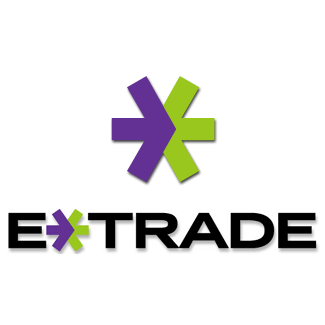The post A Guide to Investing for Teens by Kathryn Hauer, CFP® appeared first on Benzinga. Visit Benzinga to get more great content like this.
Investing for teens has never been easier when you open a brokerage account with Interactive Brokers.
When you picture investors or stock traders, you don’t envision your teens hunched over a multimonitor display, reading candlesticks and following the 200-day moving average. But why not? Today’s teenagers are savvier than ever, starting their own businesses, driving charitable endeavors and generally using their time more wisely than many previous generations of teens. Investing provides an opportunity for teenagers to learn a new skill that offers lifelong benefits.
Table of contents
[Show]
How Old Do You Need to Be to Invest?
Banks and brokerages generally require that a person be 18 years or older to open an account on their own. However, an adult parent, guardian, relative or friend can open financial accounts as the custodian for the child. In a custodial brokerage account, the adult has responsibility for investment and other actions until the child reaches age 18, at which time the ownership can be transferred to the child.
Custodial Account Basics
A custodial account works in this way: A parent or guardian opens the account, then gifts funds into the account that are able to be used for investing. As of 2021, the maximum amount that can be gifted to an account without needing to file IRS Form 709 on most platforms is $15,000 — note that unless you are in a position to eventually gift $11.7 million over your lifetime, neither you nor your children will owe any income tax on your gifts even if you do have to file Form 709.
Even though an adult is the custodian of the account, the teenage investor isn’t without control over the account. To the extent permitted by the custodian, a teenager can invest and trade as much as the funding in the account will allow.
The U.S. Securities and Exchange Commission (SEC) offers a wealth of knowledge for parents and teens who are ready to test the investing waters. Teenagers can use Investor.gov’s tips for students and other websites, competitions and games as they learn to save and invest. Parents have access to helpful resources as well.
Best Custodial Accounts for Teens
Although you can find many trading platforms to choose from, some are particularly suited for custodial accounts.
Other excellent platforms include well-known brokerages like E*TRADE, TD Ameritrade’s thinkorswim — now owned by Charles Schwab Corp. (NYSE: SCHW) — and many others. If you as a parent already have a brokerage account you like, chances are you can set up a custodial investment account with your child.
Interactive Brokers is a comprehensive trading platform that gives you access to a massive range of securities at affordable prices. You can buy assets from all around the world from the comfort of your home or office with access to over 150 global markets. Stocks, options, futures, forex, bonds and fund trading are also available, and most traders won’t pay a commission on any US stock purchase or sale if they choose the IBKR Lite pricing plan.
IBKR is geared primarily toward experienced traders and investors but now with the availability of free trades with IBKR Lite plus new platforms, services and tools for investors of all levels, casual traders can also acclimate to IBKR’s offerings.
Best For
- Low cost trading
- Low margin loan rates
- High interest paid on instantly available cash in your broker account
- Access to foreign markets
- Detailed mobile app that makes trading simple
- Wide range of available account types and tradable assets
- Comprehensive, quick desktop platform
- Mobile app mirrors full capabilities of desktop version
- Access to massive range of tradable assets
- Low margin rates
- Ability to earn high interest on instantly available cash balances
- Easy-to-use and enhanced screening options are better than ever
- IBKR GlobalTrader, IBKR GlobalAnalyst, Fractional Shares, Recurring Investments and tools like Options Wizard for simplified trading
- All-in-One Cash Management Solution enables investors to manage all of their finances in one account
- Overnight Trading Hours: IBKR offers overnight trading on over 10,000 US Stocks and ETFs enabling clients to react immediately to market-moving news and conveniently trade at almost any time.
- Trading platform may be intimidating for new investors
E*TRADE is an online discount trading house that offers brokerage and banking services to individuals and businesses. One of the first brokers to embrace online trading, E*TRADE not only survived both the dot-com bubble and Recession — it thrived. You can choose from two different platforms (one basic, one advanced). E*TRADE is a suitable broker for traders of most skill levels, whether you want to buy mutual funds and hold them for decades or dabble in options swing trading. E*TRADE offers a library of research and education materials to help you out.
Best For
- Active traders
- Derivatives traders
- Retirement savers
- Sophisticated trading platforms
- Wide range of tradable assets
- Exceptional customer service
- Limited currency trading
- Higher margin rates than competitors
- No paper trading on its standard platform
This publicly listed discount broker, which is in existence for over four decades, is service-intensive, offering intuitive and powerful investment tools. Especially, with equity investing, a flat fee is charged, with the firm claiming that it charges no trade minimum, no data fees, and no platform fees. Though it is pricier than many other discount brokers, what tilts the scales in its favor is its well-rounded service offerings and the quality and value it offers its clients.
Best For
- Novice investors
- Retirement savers
- Day traders
- World-class trading platforms
- Detailed research reports and Education Center
- Assets ranging from stocks and ETFs to derivatives like futures and options
- Thinkorswim can be overwhelming to inexperienced traders
- Derivatives trading more costly than some competitors
- Expensive margin rates
Charles Schwab is a solid choice for traders of all skill levels. It offers full access to the U.S. equity and options markets as well as 30 international markets. Traders can create a diverse portfolio with $0 commissions and no account minimums. Schwab’s margin trading is expensive but Schwab makes up for it with affordable futures and options trades, along with a comprehensive mobile offering.
Best For
- 3 trading platforms perfectly in sync makes matching your platform to your skill level a snap
- Excellent futures trading education for new traders
- $0 account minimum means anyone can start trading
- Wide range of available assets to trade, including futures and 30 global markets
- SmartStreet Edge platform is powerful enough for advanced traders, yet easy enough for new traders to utilize
- Unique educational resources (like infographics and podcasts) make learning fun
- Margin rates are more expensive than competitors
- More limitations on available margin than competitors
- Expensive mutual funds
Types of Investment for Teens
Investing can be a great way to build wealth and save for the future, but it’s important to make sure that teens understand the risks associated with investing. While teens may not have as much money to invest as adults, there are still plenty of investment opportunities for them. Here are just a few types of investment options that teens should consider having in their investing account:
Mutual Funds
Investing in mutual funds or index funds is one of the most popular ways for teens to invest. Mutual funds are professionally managed collections of stocks, bonds, and other investments that spread out the risk and make it easier for investors to diversify their portfolios.
ETFs
Exchange-traded funds (ETFs) are similar to mutual funds but often come with lower management fees. ETFs can provide teens with a variety of different investments, such as stocks, bonds, commodities, and more.
Stocks
Investing in individual stocks can be a great way for teens to get started with investing. It’s important to know which stocks to invest in and when to buy or sell them. Teens should consider doing research on different companies before investing in any particular stock.
Bonds
Bonds can provide a steady stream of income that is relatively low-risk. Bonds are essentially loans made to companies or governments, and they guarantee repayment of the principal plus interest over a set period of time. Investing in bonds can be a great way for teens to gain experience with investing while earning some money in return.
Investing in the Stock Market
The most exciting aspect of investing for teens would have to be trading stocks. The elation of buying 30 shares of AMC Entertainment Holdings Inc. (NYSE: AMC) at $12 per share and watching it catch meme stock status and shoot up to $62 per share can’t be matched. Of course, teens will also learn that not all stocks rise, especially at that meteoric rate. But that’s a lesson that’s better to learn at age 16 when you are losing your holiday gift money rather than at age 35 when dollars evaporate for a much-needed paycheck toward your mortgage.
Having a real account with money in it is a great impetus for teenagers to learn about the economy and how it affects the stock market. Rewards gained from growing the account will further encourage interest in the business world as teenagers learn ways to make profits by investing their money.
High-Yield Savings Account
Another tool parents may wish to pursue is opening a high-yield savings account for their children. These financial investments are low-risk ways to steadily, although slowly at today’s interest rates, earn money with compound interest.
M1 Finance is a unique investing platform that allows investors to allocate their funds through a strategy called “pie investing.” When you open an account with M1, you can choose from 1 of 80 expert portfolio allocations, which the platform calls “pies.” Each pie is made up of a unique mix of stocks and ETFs and each represents a “slice” of your overall account.
Pies distinguish themselves by their asset allocation and investment choices. For example, investors who want to hold onto their investments until they retire might choose a pie with a focus on slow, steady growth, while investors who value corporate responsibility may want to choose M1’s socially responsible investment portfolio.
You can also create your own pie by selecting individual stocks and ETFs. Every time you make a deposit into your M1 account, the broker will automatically divide your funds between your investments.
M1 offers only basic educational tools and its customer support leaves much to be desired. However, if you’re looking for a way to put your investments on autopilot, M1 Finance might be the right choice for you.
Best For
- Don’t want to take an active role in portfolio management
- Need a large amount of hand-holding when it comes to selecting investments
- Want the option to invest in a socially responsible portfolio
- Pie investing system offers a unique visual component to investing
- Streamlined mobile app offers full functionality of the desktop platform, plus access to M1’s banking components
- Socially responsible portfolio option is perfect for investors who want to invest only in companies that offer positive business practices
- No access to mutual funds, futures, forex or options investing
- Limited charting tools and indicators
- Poor customer service selection
- Basic educational offerings cater only to very new investors
Get started
securely through Ally Mortgage’s
website
Teach Your Kids About Wise Spending
Greenlight, a company on a mission to illuminate the world of money for kids and parents, offers a debit card for kids of all ages. The Greenlight card and its app were designed for families. Kids apply real-life lessons in earning, spending, saving, giving and investing; parents get the tools they need to manage their children’s money.
Schools don’t always teach finance, so kids can grow up without the knowledge they need to make the kinds of financial decisions that impact their well-being as adults. The Greenlight debit card lets kids learn by doing so that they develop crucial financial literacy skills.
Best For
- Parents who value family financial literacy
- Kids with siblings
- Families on the go
- Fun and practical money management
- Sustainable lessons in financial literacy
- Parental control merged with child autonomy
- Access for kids without personal mobile devices
- No free option
- Monthly charge of $4.99
Teach your kids about wise spending with Greenlight.
There was a time when opening a bank account for kids was difficult. Parents pulled together change and aded a few dollars, went to the bank and got started. These days, kids can manage money using something like the Greenlight Debit Card. As a parent, you can register for a Greenlght card, give it to your child and deposit money as needed.
Your child(ren) use the card just like any other debit card, and they can easily access their allowance, money they earned through a job or take payments for babysitting, etc.
Greenlight also features budgeting and financial education resources. Kids learn how to do more than just deposit and spend money. Parents never need to worry about lost cash, and kids have just as much spending power as adults.
Start Investing as Soon as Possible
It is a huge boon to help your child invest as early as possible to promote smart financial planning and spending behaviors, both of which are immensely helpful to a teenager as they progress in life. Parents can sign teens up to practice trading with some of the great simulated trading apps Benzinga researched.
Benzinga’s Best Online Stock Brokers
Here is a list of some of the best online stock brokers identified by Benzinga.
Novice Traders Graduate to Bigger Gains
This quick introduction just opens the door for a peek inside at the different ways your teenager can start learning about investing careers and how you as a parent can aid in that. Be sure to come back to Benzinga for more investment and personal finance news, tips and articles.
Frequently Asked Questions
How is fintech spurring teenager interest in trading?
Fintech startups are looking to serve younger investors, including teenagers. In the last 5 years, investors contributed $535 million into 89 known deals with fintech startups that described themselves as offering savings platforms for children, young people and parents. Of that, $344 million was raised in 2020. Quite a few startups are making waves, including Greenlight Financial Technology, founded in 2014, which guides parents to teach children how to save with its app and debit card products.
What should I invest in as a teenager?
The world of investing is wide open, and as you gain more education in stock trading, you’ll become more confident in your choices. Many teens like to invest in stocks of companies whose products they love. A good way to diversify would be to buy shares in an exchange-traded fund. Also, stocks of companies that pay dividends let you earn money while you hold the stock.
Can a 14 year old start investing?
Although a 14-year-old can’t legally open a brokerage account, a parent can open a custodial account for their teenager.
The post A Guide to Investing for Teens by Kathryn Hauer, CFP® appeared first on Benzinga. Visit Benzinga to get more great content like this.














